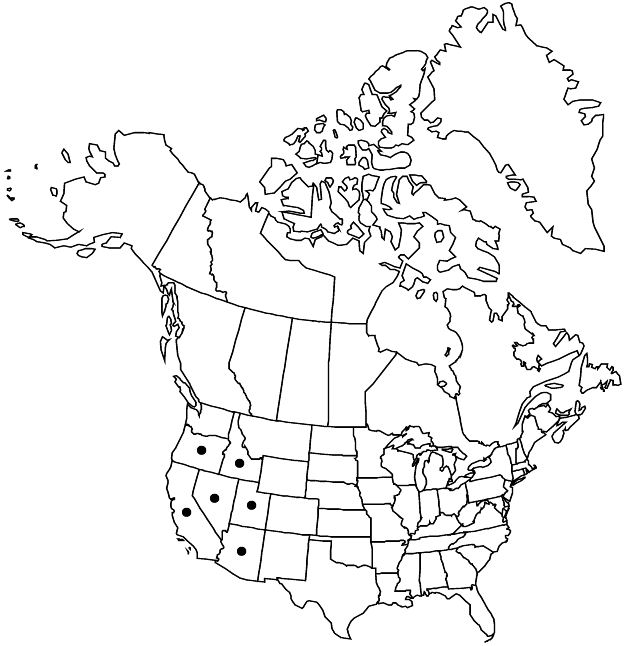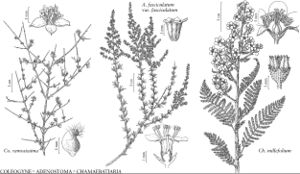Chamaebatiaria millefolium
Trudy Imp. S.-Peterburgsk. Bot. Sada 6: 225. 1879.
Stems: internodes (1–) 6–12 mm. Leaves: stipules 2–4 mm, green on leaf base margins; blade 2.6–7 (–9.6) × 0.9–2 (–3) cm, 1 (–2) -pinnate-pinnatifid into 13–25 pairs of pinnae; pinnae oblong-lanceolate, (4–) 6–14 (–16) × 2–4 mm, divided into 6–10 opposite or alternate pairs of obovate to ovate segments 0.8–2 mm; segments obtuse-rounded, entire or secondarily lobed on proximal margins, proximal margins decurrent along rachillae extending to subtending divisions (pinnae then pinnatifid and leaves then 2-pinnate), pinnae margins of proximalmost lobes decurrent along adaxial leaf-rachises, abaxial surfaces of rachises, rachillae, and petioles hairy, adaxial glabrous. Inflorescences 3–15 (–23) × 2–8 (–12) cm, leafy proximally, flowers crowded along distal branches; lobes of distal bracts and bracteoles acute. Flowers: sepals valvate, 2.5–4 mm, acute, abaxial surface hairy, glandular; petals spreading, margins erose, glabrous; filaments spreading, inner more erect, 3–4 mm, glabrous, anthers orbicular, introrse, versatile, 0.4–0.5 mm; styles 3–5 mm. Follicles reddish-brown, leathery, hairy. Seeds yellowish, 2.5–3.5 mm. 2n = 18.
Phenology: Flowering Jul–Sep.
Habitat: Dry, rocky sagebrush scrub, pinyon-juniper woodlands, montane coniferous forests to subalpine woodlands
Elevation: 900–3400 m
Distribution

Ariz., Calif., Idaho, Nev., Oreg., Utah.
Discussion
Chamaebatiaria millefolium grows in southern Oregon, northern California, and the eastern slope of the Sierra Nevada to southern Idaho, Nevada, north-central Arizona, and western Utah.
Selected References
None.
Lower Taxa
"thin" is not a number."broadened" is not a number.
